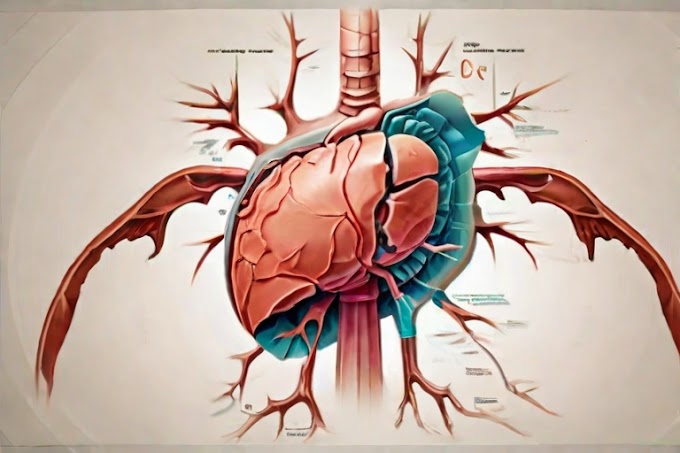
I. Introduction of Diabetes
II. Types of Diabetes
III. Less Common Types of Diabetes
IV. Lifestyle and Diabetes
V. Prevention and Control
VI. Challenges and Myths
VII. Future Outlook
VIII. Conclusion
Types of Diabetes: Navigating the Diverse Landscape of a Silent Epidemic
Diabetes, a chronic condition affecting millions globally, manifests in various forms. From the more familiar Type 1 and Type 2 to lesser-known types like gestational, understanding the diverse landscape of diabetes is crucial for effective management and prevention.
I. Introduction
A. Definition of Diabetes
Diabetes, commonly referred to as diabetes mellitus, is a group of metabolic disorders characterized by elevated blood sugar levels over an extended period. These conditions result from the body's inability to produce or effectively use insulin.
B. Prevalence and Impact
With an increasing global prevalence, diabetes has emerged as a silent epidemic. Its impact extends beyond the individual, affecting families, communities, and healthcare systems. Addressing the complexities of diabetes requires a comprehensive understanding of its types and associated factors.
II. Types of Diabetes
A. Type 1 Diabetes
1. Causes and Risk Factors
Type 1 diabetes is an autoimmune condition where the immune system mistakenly attacks and destroys insulin-producing cells in the pancreas. Genetic predisposition and environmental triggers play key roles in its onset.
2. Symptoms
Common symptoms include excessive thirst, frequent urination, unexplained weight loss, and fatigue. Early diagnosis is crucial for effective management.
3. Management and Treatment
Treatment involves insulin therapy, often through injections or an insulin pump. Lifestyle modifications and regular monitoring are essential for maintaining optimal blood sugar levels.
B. Type 2 Diabetes
1. Causes and Risk Factors
Type 2 diabetes, more prevalent than Type 1, is often linked to lifestyle factors, genetics, and age. Obesity and a sedentary lifestyle increase the risk significantly.
2. Symptoms
Symptoms include increased hunger, blurred vision, slow-healing wounds, and tingling in extremities. Lifestyle changes and medications are primary management strategies.
3. Management and Treatment
Managing Type 2 diabetes involves lifestyle modifications such as diet and exercise, along with medications or insulin therapy if needed. Regular monitoring is essential to prevent complications.
C. Gestational Diabetes
1. Occurrence during Pregnancy
Gestational diabetes develops during pregnancy when the body cannot produce sufficient insulin to meet increased demands.
2. Risk Factors
Risk factors include maternal age, obesity, and a family history of diabetes. Proper management is crucial for both maternal and fetal health.
3. Impact on Mother and Child
Untreated gestational diabetes can lead to complications during pregnancy and delivery. Both mother and child are at an increased risk of developing Type 2 diabetes later in life.
III. Less Common Types of Diabetes
A. Monogenic Diabetes
1. Genetic Basis
Monogenic diabetes results from mutations in a single gene. Proper diagnosis is crucial for targeted treatment.
2. Diagnosis and Treatment
Genetic testing helps identify specific gene mutations, guiding treatment decisions. Management may involve medications or lifestyle modifications.
B. Secondary Diabetes
1. Causes and Examples
Secondary diabetes is a result of another medical condition or certain medications. Examples include pancreatic diseases and steroid use.
2. Management
Treating the underlying cause is key to managing secondary diabetes. Close collaboration between healthcare providers is essential for effective care.
IV. Lifestyle and Diabetes
A. Role of Diet
A balanced diet, rich in whole grains, fruits, vegetables, and lean proteins, plays a crucial role in diabetes management. Monitoring carbohydrate intake is particularly important for those with diabetes.
B. Importance of Physical Activity
Regular exercise helps regulate blood sugar levels, improve insulin sensitivity, and maintain a healthy weight. Tailoring exercise plans to individual needs is essential.
C. Stress Management
Chronic stress can impact blood sugar levels. Incorporating stress-management techniques, such as meditation or yoga, is beneficial for overall well-being.
V. Prevention and Control
A. Healthy Lifestyle Practices
Adopting a healthy lifestyle, including a balanced diet and regular exercise, is key to preventing Type 2 diabetes. Early intervention can also delay or prevent complications.
B. Regular Check-ups and Monitoring
Routine check-ups and monitoring of blood sugar levels are essential for early detection and effective management. Regular screenings help identify risk factors and enable timely interventions.
C. Public Health Initiatives
Community-based programs and public health campaigns play a crucial role in raising awareness, promoting healthy lifestyles, and reducing the overall burden of diabetes.
VI. Challenges and Myths
A. Common Misconceptions
Addressing common misconceptions about diabetes, such as the belief that it only affects older individuals, is vital for accurate public understanding.
B. Societal Stigmas
Stigmas surrounding diabetes can lead to discrimination and hinder proper care. Educating the public to eliminate stereotypes is essential for fostering a supportive environment.
C. Dispelling Myths through Education
Educational initiatives should focus on dispelling myths and providing accurate information about diabetes. Increased awareness contributes to early diagnosis and effective management.
VII. Future Outlook
A. Advances in Diabetes Research
Ongoing research explores innovative treatments, including beta cell transplantation and gene therapies, offering hope for more effective and personalized interventions.
B. Promising Treatments and Technologies
Advancements in technology, such as continuous glucose monitoring and artificial pancreas systems, show promise in enhancing diabetes management and improving quality of life.
VIII. Conclusion
Understanding the diverse landscape of diabetes is crucial for effective management and prevention. By addressing the nuances of each type, adopting a healthy lifestyle, and dispelling myths, we can collectively work towards reducing the impact of this silent epidemic.
FAQs
Can diabetes be prevented through lifestyle changes alone?
- While lifestyle changes significantly reduce the risk of Type 2 diabetes, genetic factors also play a role. Regular exercise and a balanced diet are key preventive measures.
Are all types of diabetes lifelong conditions?
- Most types of diabetes are chronic and lifelong. Proper management and lifestyle modifications are essential for a healthy life.
What is the link between obesity and Type 2 diabetes?
- Obesity increases the risk of developing insulin resistance, a key factor in Type 2 diabetes. Maintaining a healthy weight is crucial for prevention.
How often should individuals with diabetes monitor their blood sugar levels?
- The frequency of monitoring varies, but regular checks, as advised by healthcare providers, are crucial for effective management.
Are there any breakthrough treatments on the horizon for diabetes?
- Ongoing research into beta cell transplantation, gene therapies, and technological advancements offers hope for more effective treatments in the future.






